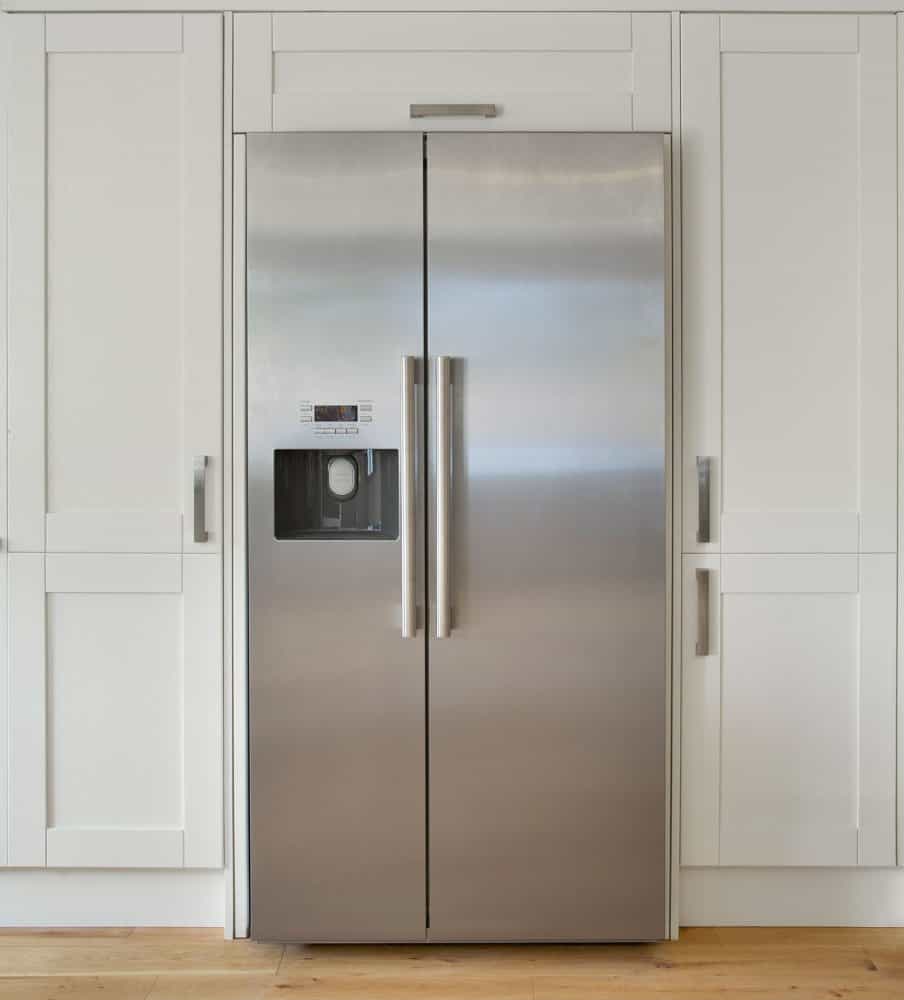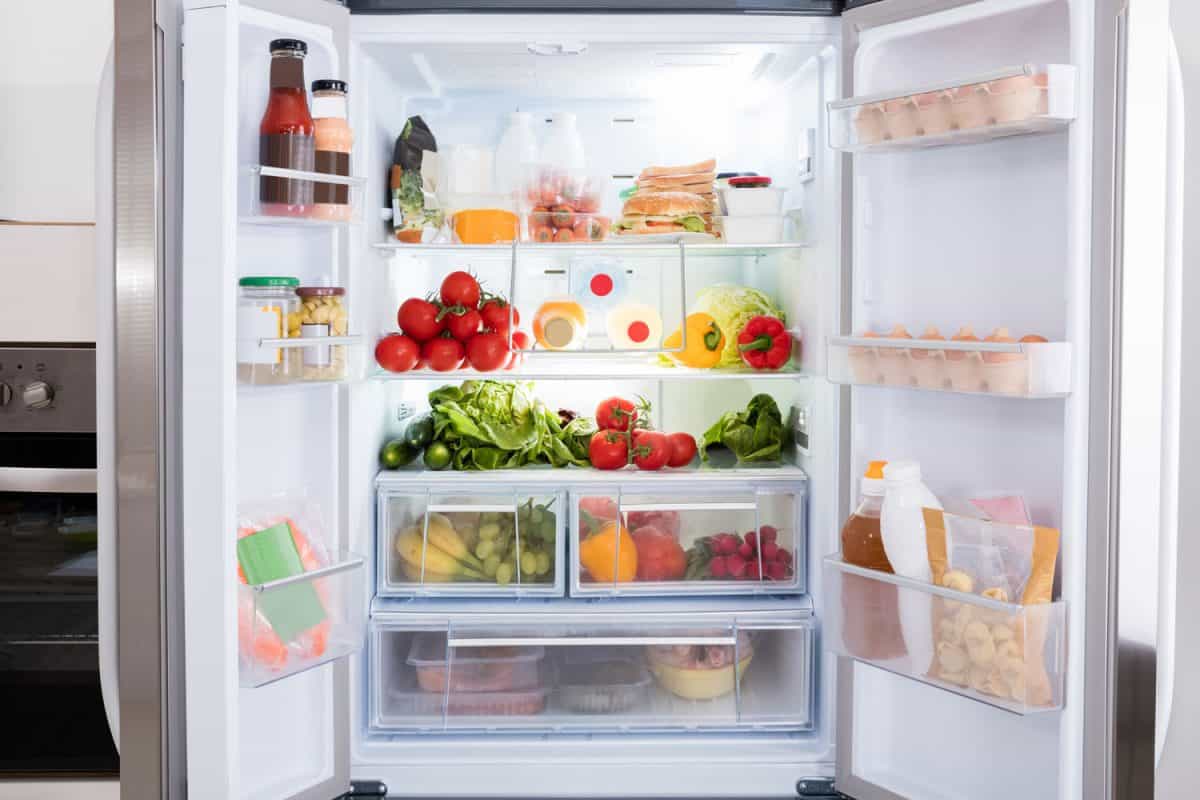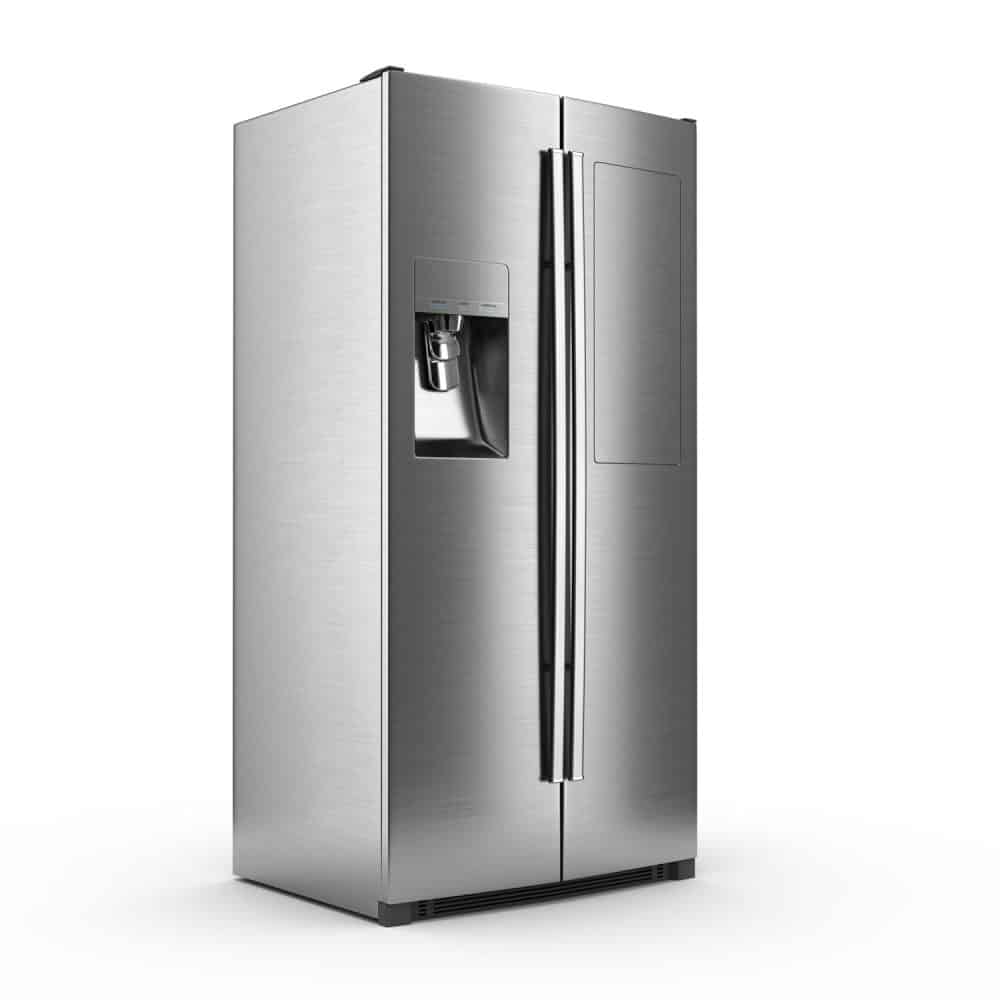Refrigerators are essential appliances of the modern home kitchen. They keep our food fresh and refreshing. To plan a kitchen layout and food storage, you need to know how big a refrigerator is. In this post, we gather up-to-date research to answer your question thoroughly.
Refrigerator sizes vary vastly based on several different parameters. This means it is usually possible to find a fridge to fit almost any application or space. Generally, refrigerator-size changes based on the following variables:
- Height (60" to 72")
- Width (23" to 40")
- Depth (24" to 35")
- Cubic Feet (18 cu. ft to 32 cu. ft)
- Fridge Type
Keep reading the rest of this post for additional exploration of the factors listed above. This guide includes all you need to understand how large typical refrigerators are and choose the right fridge for you and your space.
![Interior of modern comfortable kitchen, How Big Is A Refrigerator? [Dimensions Explored]](https://kitchenseer.com/wp-content/uploads/2022/01/How-Big-Is-A-Refrigerator-Dimensions-Explored-667x1000.png)
Height
The height of a refrigerator is measured from the base of the refrigerator feet to the tallest part of the fridge. Often, this includes the height of hinges that stick up taller than the flat refrigerator top.

Generally speaking, refrigerators range from about 60-inches to 72-inches tall. However, commercial fridges are often much larger than this dimension, while small dorm refrigerators or refrigerators designed for RVs are much shorter.
Width
On average, refrigerators have a width of 23-inches to about 40-inches. This measurement refers to the distance from the left to the right side of the fridge.
Also, unlike for height and depth, it is unusual to have physical projections that stick out anywhere on the width measurement. That being said, refrigerator doors usually do stick past the measured width, but only when they are open.
Depth
The depth refers to the distance from the front of the fridge to the very back of the outside of the refrigerator. This dimension varies widely from about 24-inches to 35-inches.

For an accurate measurement, the depth dimension needs to include the handles and ice machines that may stick out from the refrigerator doors and any mechanical parts that protrude from the fridge back.
Usually, homeowners and kitchen designers choose a fridge that intentionally protrudes past the cabinets a certain amount. Most commonly, fridges stick past the surrounding kitchen cabinets by about 6-inches.
Cubic Feet
The cubic feet are calculated by multiplying the fridge's interior height, width, and depth.
Importantly, cubic feet are a measure of how much food and other items you can store in your refrigerator. The more cubic feet, the more refrigerator space, the more cubic feet. Generally, common household refrigerators range from about 18-cubic feet to 32-cubic feet.
Are Cubic Foot Fridge Measurements Accurate?
According to The Association of Home Appliance Manufacturers, the cubic foot measurement cited on most refrigerators accounts for the total interior space. This always includes both the refrigerator and freezer portions of the appliance.
However, this value also includes all other interior items that the fridge is required to cool. This means shelves, drawers, ice makers, ice shoots, and other features. Therefore, the actual available storage space is reported to be up to 30-percent less than the labeled cubic feet.

This fact means that caution is warranted when shopping for refrigerators by their cubic foot dimension. If the fridge is full of shelves and other features, you may not be able to store nearly as much food as you could in a more sparsely apportioned fridge interior.
Fridge Type
While fridge type does not guarantee fridge size, different types of fridges usually fall into distinct size categories. We explore those categories, and the most common household fridge types, in the following subsections.
Top Freezer
As the name implies, the top freezer refrigerator is identified by a freezer box that sits on top of the fridge portion of the appliance.
Click here for a top freezer fridge from Amazon.
These are very common fridge types that generally fall on the smaller end of the size spectrum but can be relatively large. Top freezers typically range from about 15 to 24-cubic feet of storage capacity.
Bottom Freezer

The bottom freezer style of fridge is very similar to the top freezer style but in reverse. In general, bottom freezer refrigerators range from about 18 cubic feet to 26 cubic feet in size.
Side-By-Side
The side-by-side fridges have two tall vertical doors, one for the fridge and one for the freezer. These doors almost always open away from each other. Usually, the freezer door is narrower than the refrigerator door and often includes water or ice dispensers.

Side-by-side refrigerators fall in the medium range of fridge sizes in all their dimensions. This means that you can expect almost all of them to be between 20 and 30 cubic feet.
French Door
The french door style of refrigerators are generally the largest. They are comprised of double refrigerator doors and a freezer that opens like a drawer (usually below the fridge). All of these doors and features require additional space.
Click here for a french door fridge from Amazon.
Given these requirements, you can usually expect french door-style refrigerators to be 23 to 32 cubic feet or larger in their internal dimensions. This means that these fridges are only appropriate for larger kitchens and home layouts.
Compact
Compact fridges refer to what is commonly known as dorm fridges or fridges for recreational vehicles. Because these fridges need to fit in smaller spaces, they are accordingly much smaller. You can find these fridges in any size from about two cubic feet and up.
What is the most common refrigerator size?
There is no tried and true most common fridge size as discussed above. However, if you peruse the available models on the market, it appears that 23-cubic feet is one of the widest available sizes.
Take note, just because two fridges have the same interior storage space does not mean they have the same exterior dimensions.
How do I choose a refrigerator size?
When choosing the size of your refrigerator, you will want to consider a few main issues. Namely, the space available for your refrigerator, the number of people in your home, and the use your refrigerator will see.
Space Available
This consideration is paramount when choosing your fridge. Usually, homes are built with a specific fridge nook. Therefore, you are limited to buying a refrigerator that fits in that available space.

Unfortunately, it is generally much cheaper and easier to deal with that space, and the size of the fridge this limits you to than to take the time and money to remodel your fridge nook.
Number of People in Home
It is recommended to budget 4 to 6 cubic feet of space per adult in your home with some extra space for convenience.
When considering this recommendation, take into account your household's eating and food storage habits to choose on the higher or lower end of this spectrum.
Refrigerator Use
Next, consider what you are planning to use your refrigerator for. If you plan on storing food for catering, for entertaining large groups, or if you need to freeze significant amounts of product, a larger fridge or freezer may be necessary.
How do I know if my fridge will fit?
To understand if your fridge will fit, you need to bust out your handy tape measure. It is critical to measure your fridge space before heading shopping as guesstimates and estimates will only lead you to the return line.
Take the time to measure the spaces down to the fraction of an inch since it is not easy to make spaces larger if needed. Further, and as discussed below, it is important to leave adequate space around your refrigerator.
Door Swing Space
Additionally, you will need to measure the door's swing. This means you need to understand how much area is in front of your fridge for your doors to adequately open. Take note, sometimes this also includes space to the right or left of the fridge for when the door sticks out.
To help ensure that your door has proper room, it is helpful to snap a picture of your space before you start to shop. Often, walls on one side or the other will limit your access to a french door or side-by-side models. Top or bottom freezer models have reversible door opening directions in almost all cases.
Move-in Space
Importantly, you will also need to ensure that you have room to move your fridge into your kitchen. There are few worse feelings than carefully measuring for your fridge, buying the refrigerator, and then realizing it will not fit through a critical door jam.

Map out the widest and tallest path between the street and your kitchen to avoid this. Then, measure choke points with your tape measure. Be sure to note both height and width whenever appropriate.
Do refrigerators need space around them?
Yes, it is very critical for refrigerators to have space around them for adequate airflow. Generally, you need 2-inches from the back wall, 1-inch above the fridge, and 1/2-inch on each of the fridge sides. Without this space, the appliance has a shorter lifespan and will cost more to run.
Additional Reading
To learn more about home refrigerators, read these great Kitchen Seer posts:
- Do Apples Last Longer In The Fridge Or On The Counter?
- How Much Weight Can A Refrigerator Shelf Hold?
- Can You Place A Refrigerator In The Corner Of The Kitchen?
In Closing
In this post, we explored the common refrigerator sizes. We break this down by the primary dimensions and fridge types. To conclude, we answer a few related questions. Good luck!




![Double door freezer on a gray background, How Big Is The Typical Freezer? [4 Sizes Explained]](https://kitchenseer.com/wp-content/uploads/2020/05/Double-door-freezer-on-a-gray-background-250x250.jpg)



